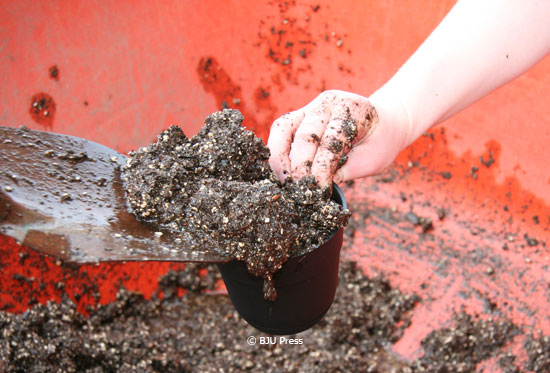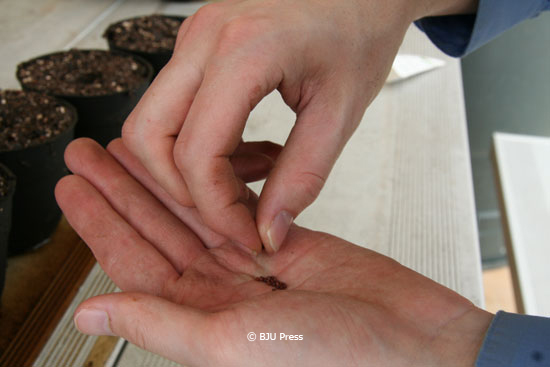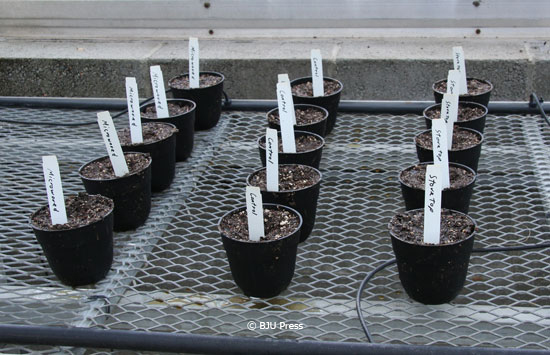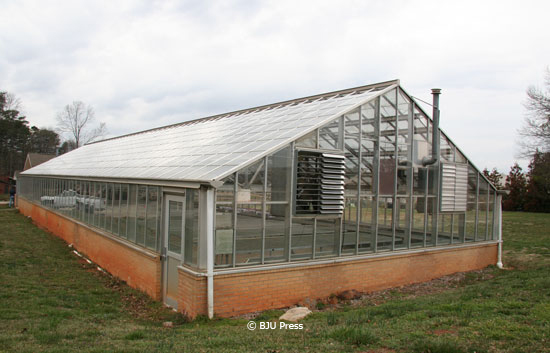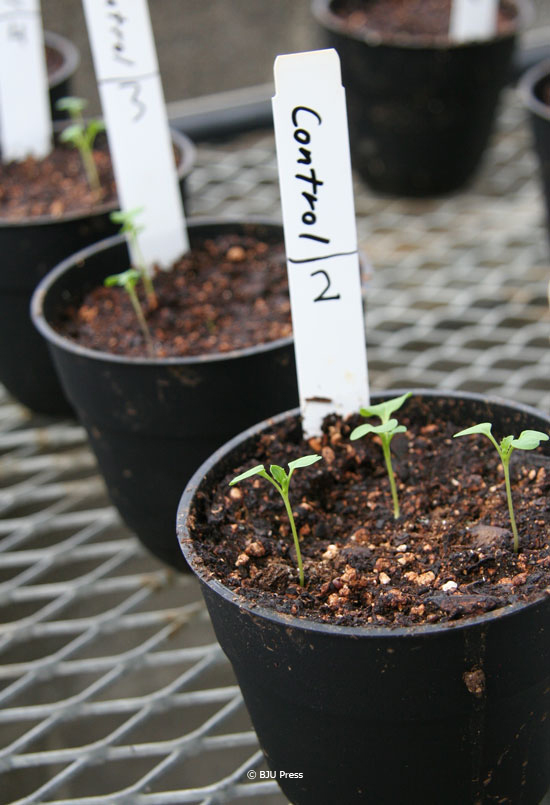When Ginger Ericson needed an example of a controlled experiment for her upcoming seventh-grade Life Science Distance Learning course, my coworker Stephen and I decided to test internet claims that microwaved water causes death or deformation in plants.
Now the plant experiment is complete, and it was a lot of fun. In retrospect, I would love to redo it using the things our team learned. However, the process of learning continues, and there’s plenty of room for us to revisit this project, and perhaps some of you can try it at home.
The Experiment
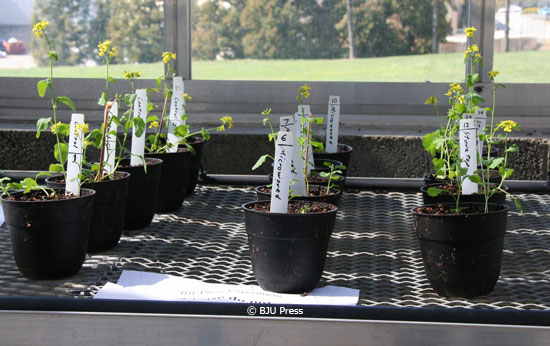
After the first signs of seed germination appeared, Krista and Ashley recorded our observations and measurements for four weeks. Our data outlined below involves twelve of the original fifteen pots.
When comparing plants, age is important, especially when dealing with plants that grow as rapidly as ours did. It really means very little to compare a plant that has been growing for six days to one that has been growing for only three days and then announce that the first plant is larger. The four Microwave Group pots germinated a few days later than the others, so the groups could not just be compared to each other on a given date. Instead, all the data presented shows the average height, leaf number, and flower number of each group by day after germination, which we defined as the first day a plant was recorded in the pot.
The average heights of the three groups were similar, but the Microwave Group plants were slightly behind the plants in the other groups.
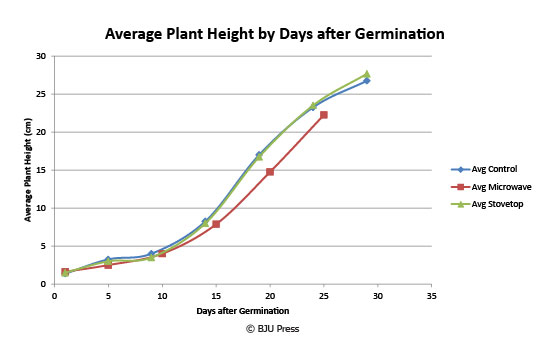
The average numbers of leaves in the three groups were also similar, with the Stovetop Group being slightly behind the other two.
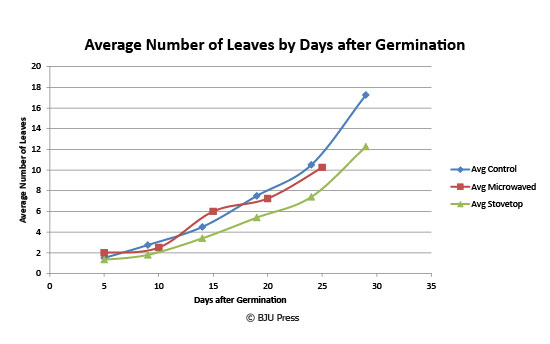
It’s difficult to measure the average number of flowers. We took our measurements two to three times each week, and it is very possible that some flowers may have bloomed, been pollinated, and then died between two measurements. However, the data indicates that the Microwave Group plants began to flower before the others, had fewer flowers, and began to taper off before the other two groups. The Stovetop Group plants had also begun to taper off by the end of the experiment but had as many flowers as the plants in the Control Group. The number of flowers in the Control Group seemed to still be increasing.
The Results
At the end of any project, lessons should be learned that can be applied to the future. This experiment was no exception. Although we were very pleased with how this turned out, some factors that were not controlled may have affected our results. If you’d like to set up this experiment, we would recommend these adjustments:
- Filter the water or use distilled water. Microwaving is a very inefficient method of boiling water, so nearly a quart of every gallon is evaporated. We used spring water, so the evaporated water left a good bit of precipitated calcium carbonate. Since the water boiled on the hotplate lost relatively little to evaporation, this phenomenon occurred to a far less extent. It is possible the excess calcium carbonate might have caused the smaller size observed in the plants in the Microwave Group.
- Take measurements every day. We took measurements two or three times a week, and that worked well with plant height and leaf number, but it may have caused some of the unusual results for the flower number. The fact that we used a plant variety specifically bred to complete its lifecycle in less than six weeks may have exacerbated this issue.
- Thin the plants at the beginning of the experiment so that each pot has the same number of plants. Some of our pots had only one plant, and others had as many as three. The resulting difference in competition could significantly affect all four measurements used.
What can we conclude?
The plants in the Microwave Group didn’t all die, and they didn’t all evidence horrible deformities—two results suggested on some websites. The plant height is curious, but so is the smaller number of leaves in the Stovetop Group. In the end, the small sample size prevents us from making broad generalizations, but we can conclude that plants do not seem greatly affected by microwaved water.
Keep an eye out for this experiment in our upcoming seventh-grade Life Science Distance Learning course!
• • • • •
Elwood holds a BA in biology and an MA in English from Bob Jones University. After working with the video lesson department at BJU Press for five years, he now serves as a secondary-level science writer at BJU Press. When not working, he enjoys taking random college classes, reading, playing disc golf, and hanging out with his wife and three kids.
